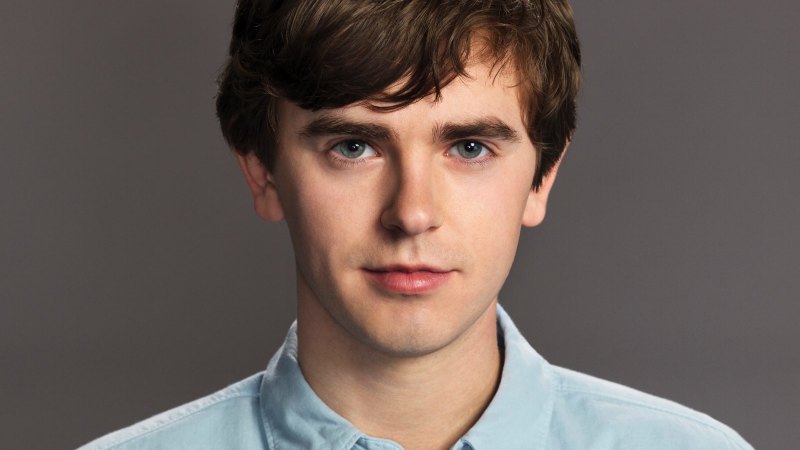
The path of Emmy history is littered with many injustices. Take, for example, Steve Carell’s failure, despite five nominations, to earn a trophy for playing Michael Scott on The Office. Or how about The Wire, which somehow, despite becoming one of the definitive exemplars of peak television, only ever mustered a measly pair of writing nominations over its five seasons on the air?

So perhaps it shouldn’t have come as a shock, given that rocky history, that Freddie Highmore walked away from last year’s Emmy season without so much as a nod for his work on The Good Doctor. But, at the risk of over-editorializing, a shock is how it felt. After all, David Shore’s series had become one of ABC’s biggest hits almost instantly, and had drawn endless praise for Highmore’s turn as Dr. Shaun Murphy, a brilliant surgical resident with autism, which struck a particularly touching chord with a scarcely represented community. As Shaun struggled to find acceptance with his colleagues at San Jose St. Bonaventure Hospital, the show not only shone a light on the challenges faced by people with autism, but also felt like a rare moment of validation for anybody who had ever felt unseen or other.
Highmore did come away from Season 1 with a Golden Globe nomination for the role, though, and if the Emmy snub hit him at all, he isn’t letting it show, and neither does it appear to have dulled his work ethic.

At Vancouver’s Bridge Studios in February, Highmore is days away from wrapping The Good Doctor’s second season. Season 2 has provided its own suite of new challenges. He started the year in the writers’ room for the first time, penning the season debut, and this week will mark the broadcast of the first episode he has directed, “Risk and Reward”, which will introduce a new Chief of Surgery, Dr. Jackson Han. The character is played by Daniel Dae Kim, who had been instrumental in finding the original Korean show on which the ABC version is based. “It has been really nice getting to introduce Daniel’s character as a director of the episode,” Highmore says.
For Highmore—also a producer on the show since its inception—the reaction from viewers to The Good Doctor’s first season was enough to inspire a doubling down on his commitment. “You’re encouraged to continue building on what you’ve done,” he tells me. He has heard much positive feedback from people on the spectrum since the show debuted. “And it’s been a constant learning experience for all of us working on the show. You’re constantly learning about Shaun, and the way he would react in certain situations.”
No stranger to episodic television—Highmore, of course, also took the lead as Norman Bates over five seasons of A&E’s Bates Motel—he also feels increasingly more comfortable in his character’s skin. “You become so close to the character that you know them so well, and so intimately. People often wonder if it gets a bit dull to play the same character for so long, but I feel like there’s more and more nuance to bring out as you get to know that character better. So many possibilities, or tiny things to try, or new sides to his personality that maybe you haven’t dug out before.”
Before cameras roll on his first scene of the day, Highmore takes me on a tour of the expansive set. He revels in pointing out the little details of the interior of the hospital (the exterior is played by the modernist city hall building in Surrey, British Columbia) and marvels at how new and high-tech this TV hospital is. “If you were sick you’d want to get better here, wouldn’t you?” he laughs.
The Good Doctor takes up several soundstages at the studios, and has even knocked through the walls adjoining two of the stages to create a large, continuous shooting space. Highmore is used to this sort of scale. He was once, after all, the Charlie of Tim Burton’s Charlie and the Chocolate Factory (“That was sort of like a theme park inside,” he recalls. “We had a real 40-foot chocolate waterfall, with a hydraulic boat on the river. It was incredible.”) But, he says, “Even though the set’s fairly big, and you could, in quotation marks, call The Good Doctor a ‘big show’, it doesn’t feel that way because the stories are so intimate. We don’t have a lot of special effects and explosions. It’s a show that’s at its best when it’s a couple of people in a room telling these emotional stories.”
He tries, anyway, not to think of the scale of the operation he’s working on. “I don’t think it’s a conscious thing, but shutting everything out is probably what acting is about,” he explains. “You can’t think about how many crew are standing around you, or what the dolly’s doing, or how many lights are on you. Ultimately, your job is to shut it all out and just focus on being as truthful as you can to your character and the moment.”

